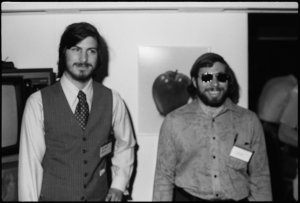Honoring a Legend
- Apple paid tribute to its co-founder Steve Jobs on the 10th anniversary of his death with a short film highlighting the late tech pioneer’s incredible achievementsnamely, the iMac, iPod, and iPhone.
- Jobs died from a rare form of pancreatic cancer after doctors discovered pancreatic neuroendocrine tumors by chance, following a scan of his kidneys for potential kidney stones. The pancreas is near the kidneys.
- These tumors occur in the pancreas but can also occur elsewhere in the body. Neuroendocrine tumors and typical pancreatic cancers come from different types of cells, are treated differently and have different symptoms.
“Hard to believe it’s been 10 years,” Tim Cook, who took over for Jobs at Apple in 2011, wrote on Twitter. “Celebrating you today and always.”
Read More"People with passion can change the world for the better." SJ. Hard to believe it's been 10 years. Celebrating you today and always. pic.twitter.com/x2IUnlO7ta
Tim Cook (@tim_cook) October 5, 2021
The film concludes with a clip of Jobs sharing one of his favorite quotes from NFL hockey hero Wayne Gretzky. “I skate to where the puck is going to be, not where it’s been … and we’ve always tried to do that at Apple, since the very very beginning, and we always will.”

The Early History of Jobs
The first Apple computer launched 25 years ago. Jobs, along with Apple co-founder Steve Wozniak, transformed modern technology and culture.
Although Jobs dropped out of school after one semester, he made sure to tell kids that he eventually incorporated the skills he learned in his semester at college into his tech designs.
Jobs was born in San Francisco to a Syrian immigrant father and mother who met at University of Wisconsin. The couple put Jobs up for adoption, and he was then adopted by Paul and Clara Jobs, a blue-collar family.
As a pre-teen, Jobs boldly dialed up William Hewlett, one of the Hewlett-Packard Co. founders, to ask him about a device he was building, then he wound up working a summer job in an assembly line for the company. He went on to work technician jobs for companies like Atari.
After co-founding Apple at age 21, he later left to launch Pixar Animation Studios, which changed the face of moviemaking, with films like Toy Story and A Bug's Life.
Jobs was a go-getter from the start and never let his family backstory affect his goals. He died a billionaire.
A Rare Form of Cancer
In 2003, Jobs was diagnosed with pancreatic cancer; the specific type of pancreatic cancer he had included neuroendocrine tumors (NETs). Your pancreas has cells that secrete hormones such as insulin, and those cells become malignant. Doctors discovered Jobs’ cancer via a CT scan of his kidneys (the pancreas is near the left kidney). Jobs said in his biography that his urologist wanted him to get the scan due to a prior issue with kidney stones. They found a neuroendocrine tumor, a rare form of the disease.
These tumors occur in the pancreas but can also occur elsewhere in the body. Neuroendocrine tumors and typical pancreatic cancers come from different types of cells, are treated differently and have different symptoms.
Challenges to Screening for Pancreatic Cancer
With pancreatic neuroendocrine tumors, even if they've spread outside the pancreas, people can live somewhat longer than the clinical form of pancreatic cancer, which is why Jobs survived for a reasonably long time at eight years.
Dr. Renuka Iyer of Roswell Park Comprehensive Cancer Center previously told SurvivorNet that NETs are brain and hormone-related cancers.
"That's one thing that's different about this disease, is the fact that it can produce hormones," Dr. Iyer said. "Some [NETs] produce hormones like insulin." Because of their hormone production NETs can be found anywhere in the body, but most commonly in the gastrointestinal tract.
There are many ways to treat NETs (primarily surgery, chemotherapy, and radiation), and specialists can offer different options.
Dr. Iyer tells SurvivorNet that surgery is the number one preference for treatment,when possible. "Even if it has spread if it is at stage four it can be surgically removed."
Drugs also work for treatment, and Dr. Iyer says that drugs used to block the hormone signals and slow the cancer spread are effective. "We used targeted agents, targeted radiation. Radiologists have options to offer where they can burn these tumors or put other particles in the liver to try to attack [the tumor]." (The most common type of NETs are found in the liver.)
Within the past ten years, a new tool has been developed to detect these cancers a NET spot scan. This specialized scan has advanced the ability to detect NETs. "With better ways to find them and measure them, it is helping to move the field along," Dr. Iyer said.
Jobs refused potentially life-saving surgery and opted for alternative treatments instead. These included the use of plants, acupuncture, and making dietary changes. However, nine months after the diagnosis, Jobs eventually opted for surgery. Many have speculated that Jobs' use of alternative therapies may have shortened his lifespan by postponing the life-prolonging conventional treatment of surgery.
When Jobs was nearing death, he sketched device designs on a notepad. He was thankful for his life and family and worked to the end. He also was known to put his wife on a pedestal.
On the day he met his wife, Laurene Powell, he called his sister Mona Simpson and said '"There's this beautiful woman and she's really smart and she has this dog and I'm going to marry her.' His abiding love for Laurene sustained him," Simpson said. "He believed that love happened all the time, everywhere. In that most important way, Steve was never ironic, never cynical, never pessimistic. I try to learn from that, still." Jobs had four children: Lisa Brennan-Jobs, Eve Jobs, Reed Jobs and Erin Jobs.
His last words, according to his sister, as he gazed off past his wife and children were: "Oh wow. Oh wow. Oh wow."
Through the Darkest Time of Your Life, a Beautiful Gift Can be Revealed
Learn more about SurvivorNet's rigorous medical review process.


